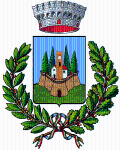Descrizione
L’eccidio di Palazzaccio, avvenuto nell’omonimo podere della fattoria di Arceno il 4 luglio del 1944, è ricordato come l’unico massacro collettivo di civili italiani da parte di soldati tedeschi in provincia di Siena. Si tratta di un episodio la cui ricostruzione è rimasta per anni controversa.
A nord della zona di San Gusmè, in località Campi, i tedeschi avevano imbastito una linea di arresto, che arrivava fino al castello di Brolio. Il 4 luglio, il giorno dopo la liberazione di Siena da parte dei soldati francesi, alcune famiglie erano sfollate a Palazzaccio, a causa dei rastrellamenti tedeschi.
L’eccidio sarebbe stato originato da un attacco compiuto da alcuni partigiani del Gruppo comandato dal tenente Uliano Grilli, ai danni di due soldati tedeschi da un giorno nel podere Fornaci, in territorio aretino. Rientrati al comando delle Fornaci, i due militari dettero l’allarme e subito alcuni colpi di mortaio vennero indirizzati sui poderi Pancole, Casalone e Palazzaccio. Intanto gli uomini presenti al Palazzaccio, sentendosi in pericolo, fuggirono nei boschi. Accerchiata la casa colonica, i militari fecero uscire tutti i presenti e il comandante iniziò a sparare con la propria pistola. Otto persone, tra cui tre bambini, morirono sul posto; un uomo, riuscito a fuggire nel bosco, venne intercettato ed ucciso dai tedeschi che stavano rientrando al podere Fornaci. Tutti gli altri riuscirono a salvarsi fuggendo nei campi. Dei presenti al podere, sopravvissero quattro persone: tre bambini e una nonna. Nessuna inchiesta venne aperta sull’eccidio.
Dal 1964, ogni anno, la domenica più vicina al 4 luglio il Comune di Castelnuovo rievoca l’eccidio con una messa di suffragio e una cerimonia di commemorazione che si svolge nel luogo dove è stata compiuta la strage, e dove sono stati sistemati una lapide (1964) e due piccoli monumenti (2000 e 2018).
English version:
The Palazzaccio Massacre, which took place at the eponymous farm at Arceno on July 4, 1944, is the only documented collective massacre of Italian civilians by German soldiers in the province of Siena. The reconstruction of the episode was ridden by controversy for years.
North of San Gusmè, in the tiny village of Campi, the Germans had drawn a stop line running through to the Castle of Brolio. On July 4, the day after the liberation of Siena by French soldiers, a few families had taken refuge at Palazzaccio from German dragnet raids.
The massacre seems to have been triggered by an attack by a few resistance members of the group led by lieutenant Uliano Grilli on two German soldiers based at the Fornaci farm in Arezzo territory. Returning to the Fornaci command post, the two soldiers sounded the alarm, and immediately a few shells were aimed at the Pancole, Casalone and Palazzaccio farms. The men at Palazzaccio, ascertaining the danger, ran off to hide in the woods. The Germans surrounded the farmhouse and ordered everyone out, and the commander began to shoot them with his own pistol. Eight people, including three children, died on the spot; another man who had managed to run into the woods was intercepted and killed by the Germans as they headed back to Fornaci. All of the others managed to save themselves by fleeing into the fields. Four of those who had been in the farmhouse survived: three children and a grandmother. No inquiry into the massacre was made.
Since 1964, every year, on the Sunday closest to July 4, the Municipality of Castelnuovo remembers the massacre with a memorial mass and a commemoration ceremony at the site, where a stone table (1964) and two small monuments (2000) are installed.
Modalità d'accesso
sempre aperto
Indirizzo
Orario per il pubblico
Punti di contatto
Ultimo aggiornamento: 4 marzo 2024, 12:58

